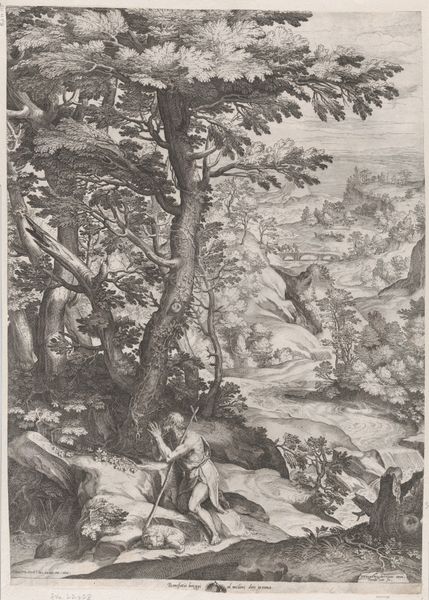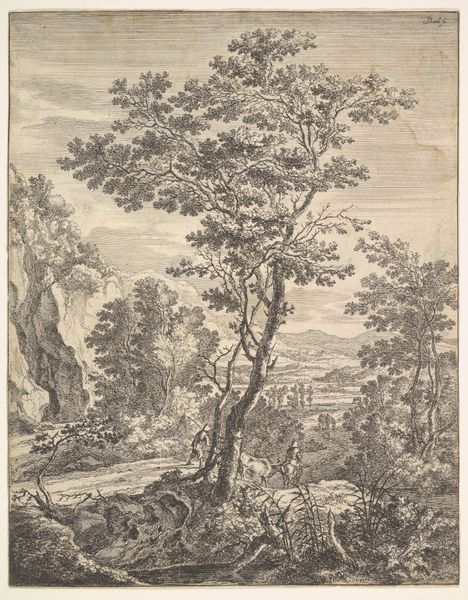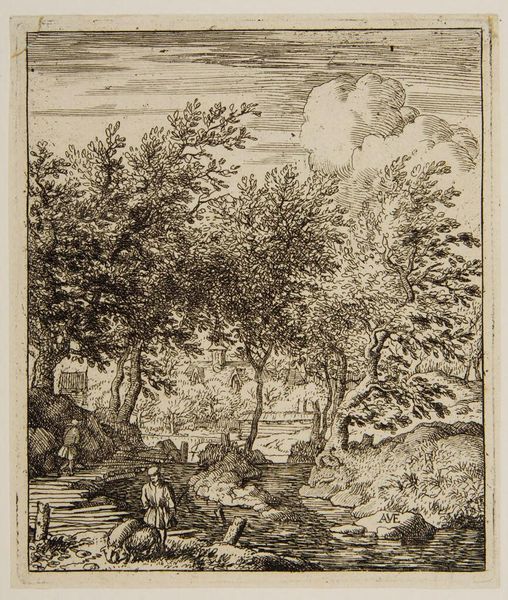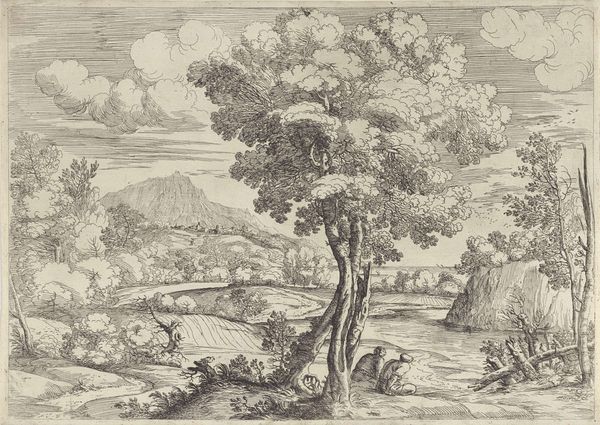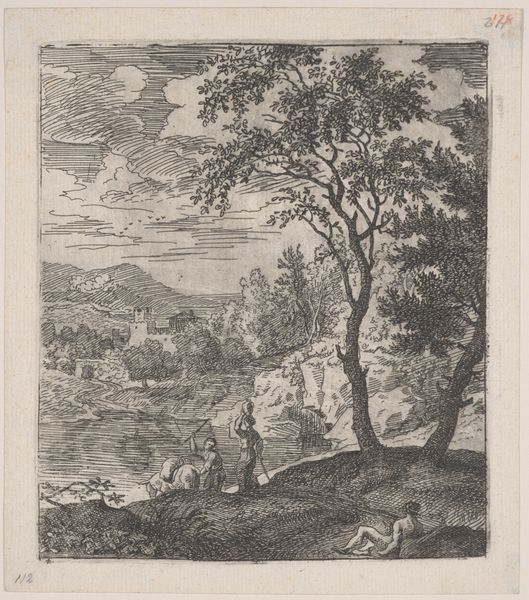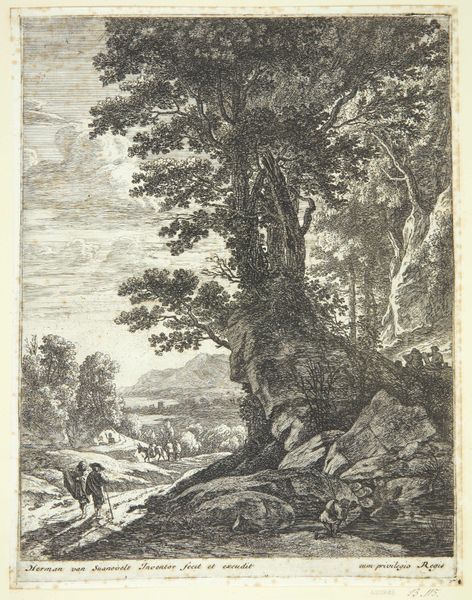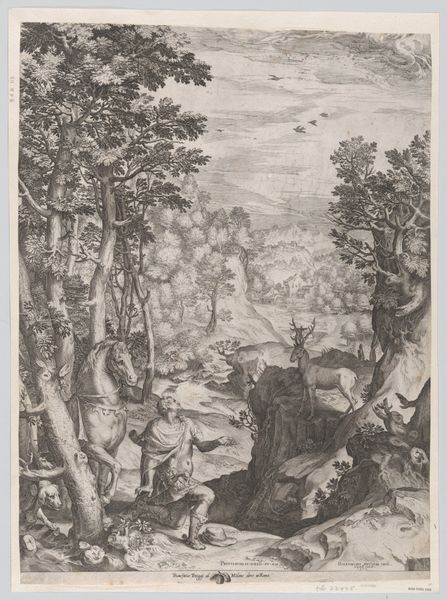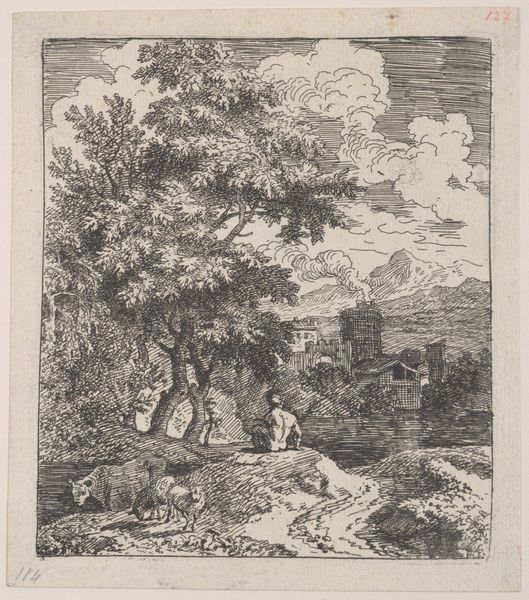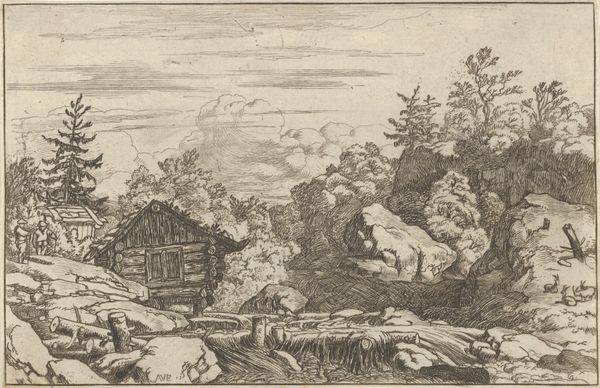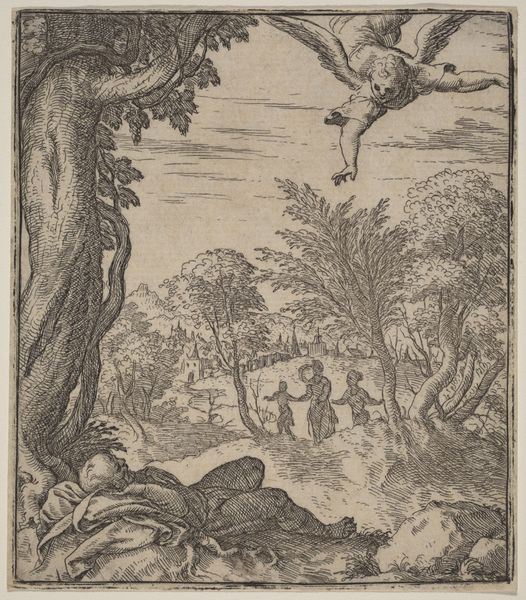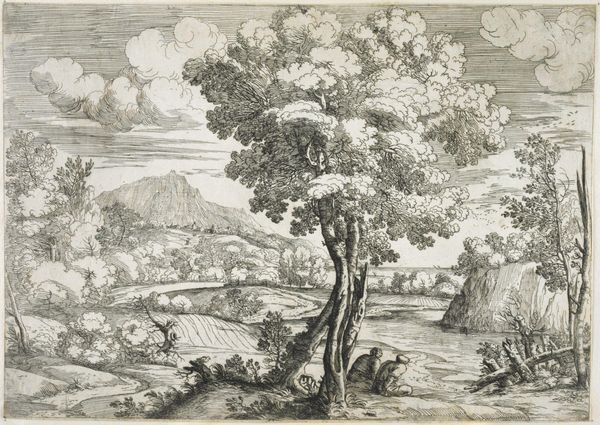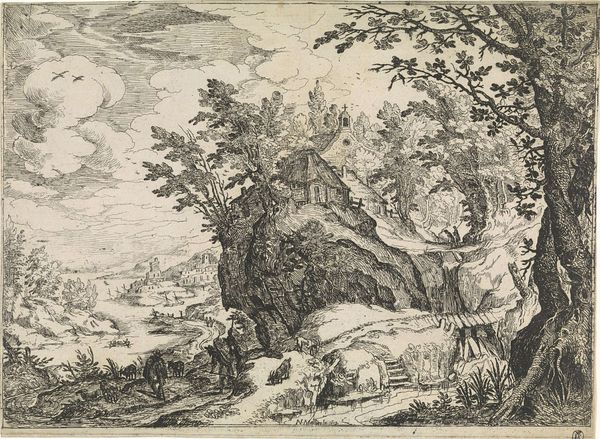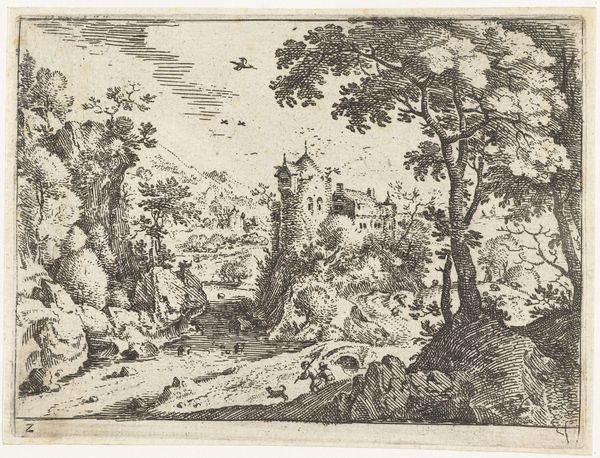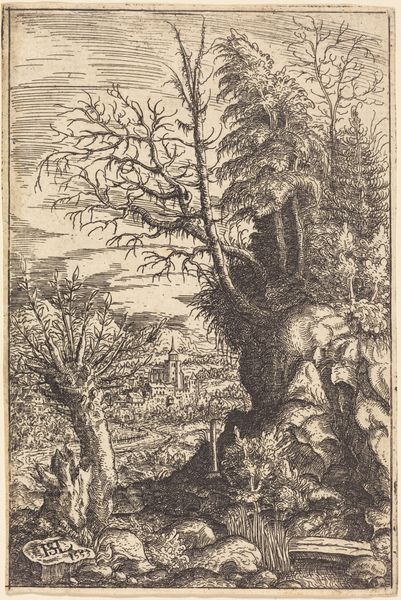
drawing, print, etching, paper
#
drawing
#
baroque
# print
#
etching
#
landscape
#
etching
#
paper
#
genre-painting
Dimensions: 127 × 107 mm
Copyright: Public Domain
Editor: So, this etching is called *The Swineherd*. It's by Allart van Everdingen, exact date unknown, here at the Art Institute. It’s small, detailed, and somehow both intimate and a bit melancholy, what's your read? Curator: The 'melancholy' you're picking up likely resonates with broader shifts in 17th-century Dutch art. Consider the rise of landscape and genre scenes: seemingly simple, bucolic views. But these were increasingly viewed and collected by a merchant class reshaping Dutch society and grappling with nascent capitalism. How might this humble scene of a swineherd reflect evolving ideas about nature, labor, and societal order? Editor: That’s interesting…so, it’s more than just a pretty picture, but reflects larger social trends? It almost feels… staged? Like a carefully crafted image of the simple life? Curator: Precisely. Ask yourself, who was consuming these images and what did this mean in a shifting socio-economic environment? The romanticization of rural life offered a contrasting vision, perhaps an idealized retreat from the complexities of urban commerce. Does the inclusion of what seems like a quaint village beyond the swineherd reinforce or challenge this sense of an idealised rural escape? Editor: It makes me think of tourist postcards almost…presenting an image of something that’s maybe not quite real. Thanks. Curator: A great insight. The politics of imagery – what’s shown, what’s omitted, who it’s for – always plays a role, even in seemingly ‘simple’ genre scenes. I have never looked at it that way before.
Comments
No comments
Be the first to comment and join the conversation on the ultimate creative platform.
